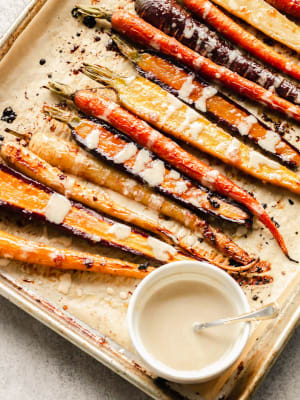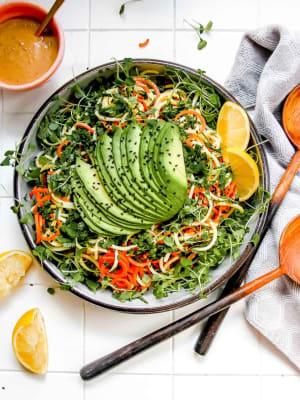Radishes: Nature's Detox Superheroes and Culinary Delicacies

Radishes: Nature's Detox Superheroes and Culinary Delicacies
Discover the hidden health treasures of radishes - from bile flow boosters to cancer-fighting compounds.
Whether white, black, red, or green, the satisfying snap and lively acidity of radish adds much-needed brightness and freshness to heavier dishes, so it’s no wonder they’ve become indispensable mise en place for many great kitchens. But in celebrating their delicious flavours and textures, not to mention shapes and colours, is it possible we’ve undersold their medicinal power as true superfoods? If so, let us put an end to this travesty without further delay so that we can give radishes all the respect and appreciation they deserve.

Noche de Rabanos
Radishes only grow wild in Southeast Asia, so we can be reasonably certain they originated in that part of the world. Their unique pungence has been adored in Japan, Korea and the Philippines ever since, where radishes of all shapes and sizes are enjoyed pickled, plain, fermented and fried.
Radishes didn’t make their way to the New World until colonial settlers brought them, at which point they were among the first vegetables ever imported. Every year on December 23 in Oaxaca, an enormous radish carving competition commemorates the arrival of the strange magenta roots that would become mainstays of famous Oaxacan cuisine. From the inception of this state-sanctioned tradition in 1897, displays of imaginative radish sculptures have drawn intimidating lineups as tourists and locals vie for a glimpse of the whimsical vegetable creations. Legend has it that their wacky growth patterns inspired this festive annual tradition of carving and sculpting these curious taproots.
Rooted in Nutrition
Radishes are deluxe chemistry sets featuring over 600 compounds, six of which were only discovered in the last 15 years. The list includes essential minerals like magnesium, potassium, iron, and copper, as well as vitamins A, B1 (thiamine), B2 (riboflavin), B3 (niacin), B6, (pyridoxine), B9 (folate) and C (ascorbic acid).
They are also loaded with two types of fibre: soluble fibre - the kind that turns to gel when it dissolves in water in the gut, and insoluble fibre - the type that remains undigested and adds bulk to the stool for easier elimination. To be more specific, the insoluble fibre in radishes is lignin, a particularly beneficial sort that prevents gallstones from forming while balancing blood sugar and cholesterol.

Liver Lovers
If there is one clinical use for radishes known across cultures worldwide, it’s that they promote healthy bile flow. They are classified as choloretics in the world of herbal medicine, which means they facilitate the free and easy flow of bile by relaxing the muscles surrounding the bile ducts. If this sounds trivial (or even gross), remember that healthy bile flow is essential not just for preventing gallstones but for escorting toxic material of all sorts, even excess hormones, out of the body.
Detoxification is a central theme for these crunchy little buddies because, on top of their biliary magic and top-notch fibre, they deliver potent enzymes to support liver function on multiple levels. Among them, one belongs exclusively to radishes, an antioxidant named RsPHGPx. This unpronounceable superhero works with the others, priming the liver to be the lean, mean detoxification machine it’s meant to be while protecting it from free radical damage.
On top of all these beautiful traits, radishes have many of the same benefits as cauliflower, kale, brussels sprouts, and other brassicaceae, aka “cruciferous” family members. Compounds like indole-3-carbinol, crambene, and sulforaphane, common to the brassicas, are well known to help prevent the growth and spread of lung, breast, colon, cervical, and prostate cancer.
Eat Them Raw
Eating cooked veggies is generally a safer bet for those with compromised digestive faculties. The heat predigests the food, breaking apart all the plant cell walls so your enzymes and stomach acid don’t need to. Radishes may be a notable exception. Many of their stunning antioxidant chemicals help to boost bile flow, ease constipation, calm an upset tummy, and support liver function, and high temperatures deactivate those same compounds.
Whatever You Do:
Do NOT throw the leaves away! Ironically, we consider the roots to be the edible part, chucking the foliage into the green bin without a second thought. But a lesser-known truth is that radish leaves are much more concentrated in antioxidant nutrients than their roots. The same is incidentally true of radish sprouts. However, they each have their own chemical profile and nuances in serving the body. Altogether, the leaves, sprouts, and roots of radishes paint a polyvalent triptych of remarkable nutrient synergy.
Let this be your invitation to get experimental and use the whole vegetable in soups, salads, ferments, or as a garnish. The good news is that even radish juice is loaded with antioxidant compounds called polyphenols. So however you enjoy radishes, and whichever part of them is your favourite, you will be doing your body a world of good in the near and distant future.
Daniluk, J. (2014, February 4). Radishes health benefits and how they detox the liver. Chatelaine. https://chatelaine.com/health/diet/radish-recipe-another-nutritious-veggie-great-for-detoxing-the-liver/
Foodie, F. (2021, March 16). Radical radishes. FINITE FOODIE. https://finitefoodie.com/radical-radishes/
Gamba, M., Asllanaj, E., Raguindin, P. F., Glisic, M., Franco, O. H., Minder, B., Bussler, W., Metzger, B., Kern, H., & Muka, T. (2021). Nutritional and phytochemical characterization of radish (Raphanus sativus): A systematic review. Trends in Food Science & Technology, 113, 205–218. https://doi.org/10.1016/j.tifs.2021.04.045
Han, K. J., Lee, J.-E., Lee, N.-K., & Paik, H.-D. (2020). Antioxidant and anti-inflammatory effect of probiotic lactobacillus plantarum KU15149 derived from Korean homemade diced-radish kimchi. Journal of Microbiology and Biotechnology, 30(4), 591–598. https://doi.org/10.4014/jmb.2002.02052
Kerns, M. (2023, May 2). The nutrients in radishes. Weekand.com. https://www.weekand.com/healthy-living/article/nutrients-radishes-18018687.php
Li, T., Liu, G.-L., Duan, M.-X., & Liu, J.-Y. (2009). Radish phospholipid hydroperoxide glutathione peroxidase provides protection against hydroperoxide-mediated injury in mouse 3T3 fibroblasts. BMB Reports, 42(10), 648–654. https://doi.org/10.5483/bmbrep.2009.42.10.648
Manivannan, A., Kim, J.-H., Kim, D.-S., Lee, E.-S., & Lee, H.-E. (2019). Deciphering the nutraceutical potential of Raphanus sativus—a comprehensive overview. Nutrients, 11(2), 402. https://doi.org/10.3390/nu11020402
Radish history - varieties of radishes. Radish History - Origins of Different Varieties of Radishes. (n.d.). http://www.vegetablefacts.net/vegetable-history/radish-history/
Shereen Lehman, M. (2022, October 25). Do vegetables high in glucosinolates help fight cancer?. Verywell Fit. https://www.verywellfit.com/what-are-glucosinolates-and-why-are-they-good-for-me-2505908
Singh, K. K. P., & Tierra, M. (2010). In The way of ayurvedic herbs: The most complete guide to natural healing and health with traditional Ayurvedic herbalism (p. 244). essay, Motila Banarsidass Publishers.
Takaya, Y., Kondo, Y., Furukawa, T., & Niwa, M. (2003). Antioxidant constituents of radish sprout (kaiware-daikon), raphanus sativus L. Journal of Agricultural and Food Chemistry, 51(27), 8061–8066. https://doi.org/10.1021/jf0346206
Tamura, S., Tsuji, K., Yongzhen, P., Ohnishi-Kameyama, M., & Murakami, N. (2010). Six new acylated anthocyanins from red radish (Raphanus sativus). Chemical and Pharmaceutical Bulletin, 58(9), 1259–1262. https://doi.org/10.1248/cpb.58.1259
Why eat radishes? A food as medicine monograph. Shairin Farrell. (n.d.). https://www.shairinfarrell.com/namastenaturopathyhealthblog/mint
Wikimedia Foundation. (2022, December 23). Night of the radishes. Wikipedia. https://en.wikipedia.org/wiki/Night_of_the_Radishes
Yang, X.-D., Li, W.-J., & Liu, J.-Y. (2005). Isolation and characterization of a novel phgpx gene in Raphanus sativus. Biochimica et Biophysica Acta (BBA) - Gene Structure and Expression, 1728(3), 199–205. https://doi.org/10.1016/j.bbaexp.2005.02.003
Zhang, J., Qiu, X., Tan, Q., Xiao, Q., & Mei, S. (2020). A comparative metabolomics study of flavonoids in radish with different skin and flesh colors (raphanus sativus L.). Journal of Agricultural and Food Chemistry, 68(49), 14463–14470. https://doi.org/10.1021/acs.jafc.0c05031



